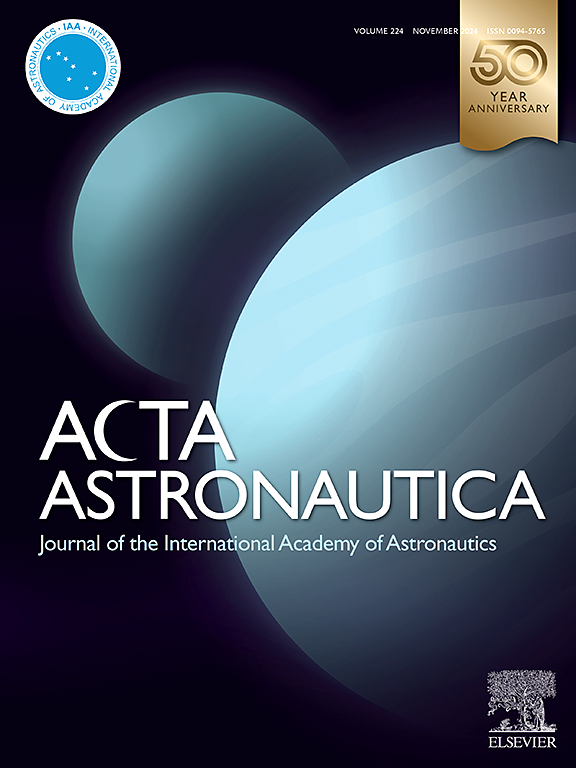卫星间接位置的电动力姿态稳定
IF 3.1
2区 物理与天体物理
Q1 ENGINEERING, AEROSPACE
引用次数: 0
摘要
研究了卫星在轨道参照系中位置的三轴稳定问题。卫星在中等高度的圆形轨道上运行,具有可控的静电荷和自身的磁矩。提出的问题是,是否有可能实现这样一个卫星角位置的电动控制系统,在这个系统中,干扰重力力矩的影响通过控制力矩中的附加项来补偿。提出了一种分析卫星三轴姿态稳定问题非线性稳定性的建设性解析方法。所建立的数学模型对轨道倾角没有限制,对地球磁场模型的精度也没有限制。证明了卫星稳定角位置的渐近稳定性定理。该定理证明了建立特定控制系统的可能性。非线性分析基于直接李雅普诺夫方法。所研制姿态控制系统的有效性已通过计算机建模得到验证。本文章由计算机程序翻译,如有差异,请以英文原文为准。
Electrodynamic attitude stabilization of a satellite in an indirect position
The problem of triaxial stabilization of the satellite position in the orbital reference frame is considered. The satellite moves in a medium-height circular orbit, has a controlled electrostatic charge and its own magnetic moment. The question is raised on the possibility of implementing such a system of electrodynamic control of the angular position of the satellite in which the influence of the disturbing gravitational torque is compensated by additional terms in the control torques. A constructive analytical approach to the analysis of nonlinear stability in the problem of the triaxial attitude stabilization of the satellite is presented. The constructed mathematical model has no restrictions on the orbit inclination, on the accuracy of the model of the Earth’s magnetic field as well. The theorem on the asymptotic stability of the stabilized angular position of the satellite is proved. The theorem substantiates the possibility of building the specified control system. Nonlinear analysis is based on the direct Lyapunov method. The effectiveness of the developed attitude control system has been confirmed by computer modeling.
求助全文
通过发布文献求助,成功后即可免费获取论文全文。
去求助
来源期刊

Acta Astronautica
工程技术-工程:宇航
CiteScore
7.20
自引率
22.90%
发文量
599
审稿时长
53 days
期刊介绍:
Acta Astronautica is sponsored by the International Academy of Astronautics. Content is based on original contributions in all fields of basic, engineering, life and social space sciences and of space technology related to:
The peaceful scientific exploration of space,
Its exploitation for human welfare and progress,
Conception, design, development and operation of space-borne and Earth-based systems,
In addition to regular issues, the journal publishes selected proceedings of the annual International Astronautical Congress (IAC), transactions of the IAA and special issues on topics of current interest, such as microgravity, space station technology, geostationary orbits, and space economics. Other subject areas include satellite technology, space transportation and communications, space energy, power and propulsion, astrodynamics, extraterrestrial intelligence and Earth observations.
 求助内容:
求助内容: 应助结果提醒方式:
应助结果提醒方式:


